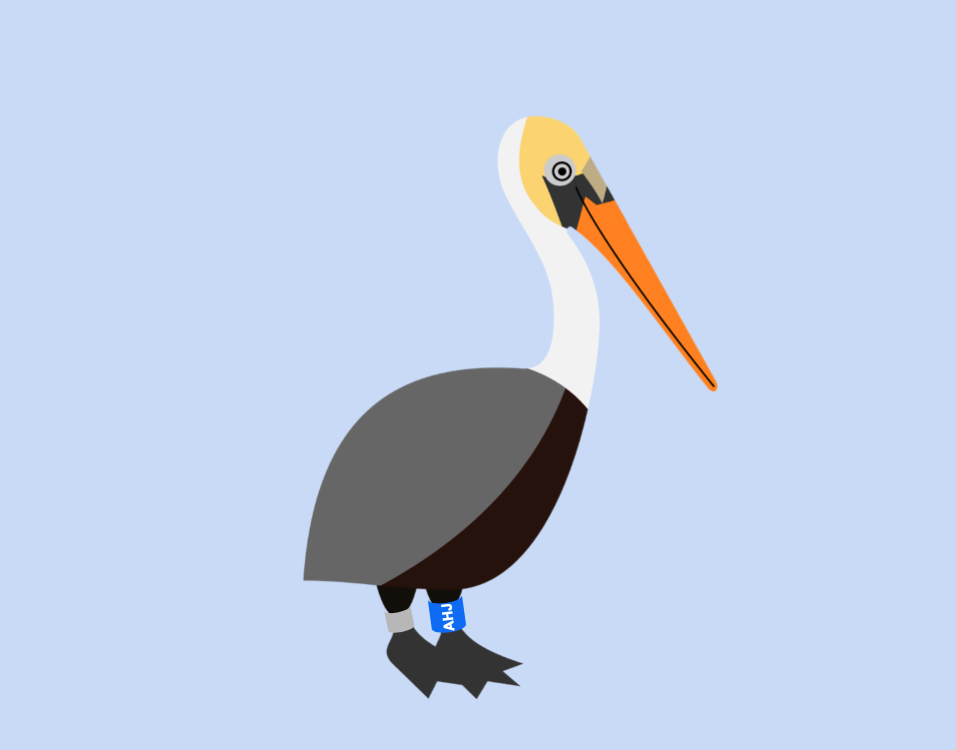Jeff Liechty, coastal biologist for the Florida Coastal Islands Sanctuaries (FCIS), motored up to Egmont Key National Wildlife Refuge in the Tampa Bay region, pulling out his binoculars to record the sea and shorebirds resting on the sand. Through monthly surveys in coordination with Joyce Kleen from the U.S. Fish and Wildlife Service, Jeff counts birds at the refuge (which is also a Florida State Park), which most years is the largest nesting site along the Central Gulf Coast of Florida.
A colored band caught his eye, and he zoomed in on a bright blue band with the letters "AHJ" clearly visible. After snapping photos, Jeff continued with his survey, returning later to the office to look up the unique code that sets this pelican apart from all others. As soon as he pulled up the information, he tapped out a message to Rochelle Streker, Audubon's Southwest Florida Shorebird Manager - he had found one of her pelicans!
Back in 2018, Rochelle banded Brown Pelicans as part of her graduate studies, and AHJ was one of 700 pelicans banded in Texas, Alabama, and Florida in an effort to learn more about breeding success and movement of this iconic species.
"I banded AHJ on Gaillard Island in Mobile, Alabama," Rochelle explains, "It's an Army Corps of Engineers dredge spill island that is used by breeding birds in the summer, and hosts an absolutely huge colony of nesting Brown Pelicans."
AHJ - one of two chicks from its nest that fledged that year - was last seen by Rochelle at the end of June in 2018, hanging around the colony.

Fast forward to 2021. As part of his work for FCIS, Jeff visits islands and coastlines across the Tampa Bay region to monitor and protect wading bird, seabird, and shorebird nesting and wintering sites, which puts him in the perfect position to see banded birds.
"It's always exciting to see a banded bird! All birds are individuals with their own story and history, but that usually remains a mystery to us," he says, "Banding allows us a window into that individual's life. I'm always eager to learn where a bird was hatched, how old it is, and possibly where it has traveled since then."
Audubon staff will continue to keep an eye out for AHJ.
"I love hearing back from the public about seeing the birds that I banded!" Rochelle adds, "It’s always exciting to hear about how far they have gone from their natal colonies in coastal Alabama (we’ve even had our birds spotted in Mexico before), and even more exciting to see photos of how they have grown and changed from the partially-feathered chicks that I banded years ago. This resight by Jeff was special for me as I had just started my new position down here in Florida when he spotted it, and it was awesome to feel connected to my old research while starting in this new role."
Click here to report a bird band.




